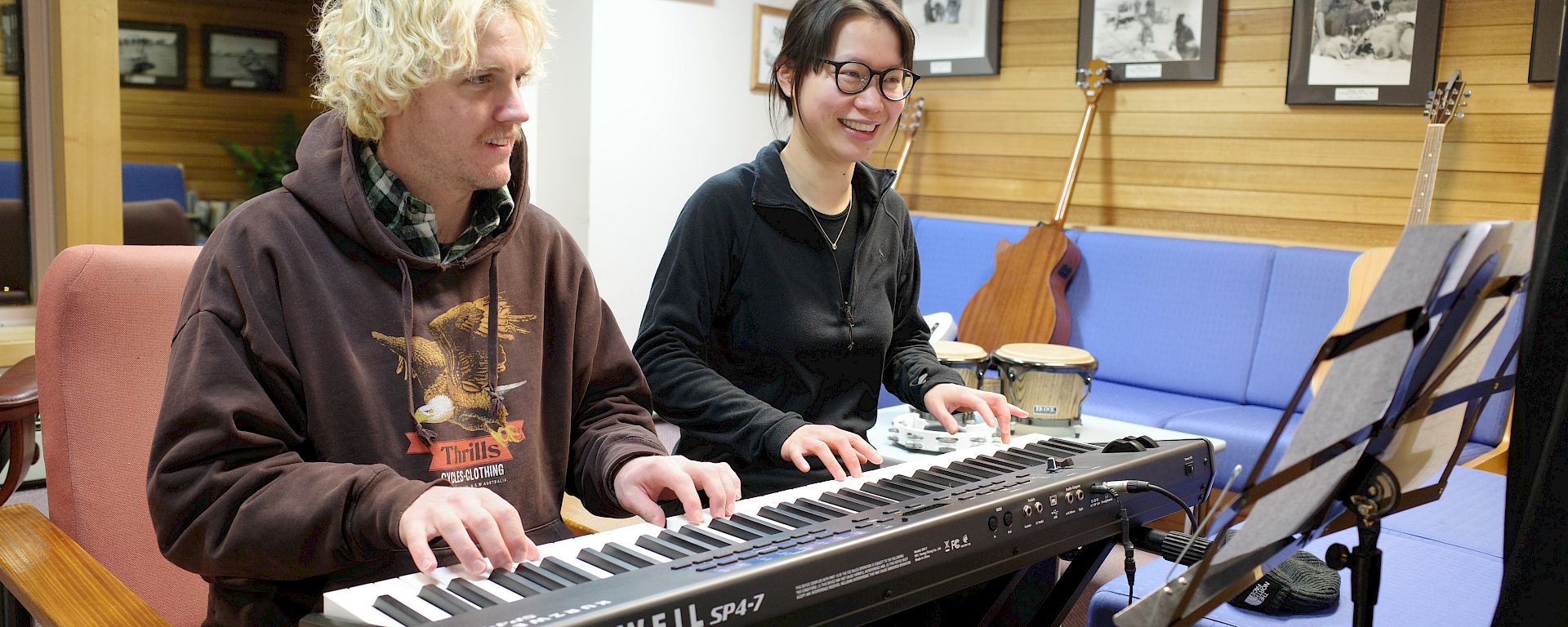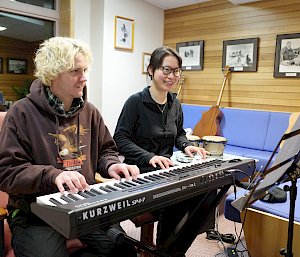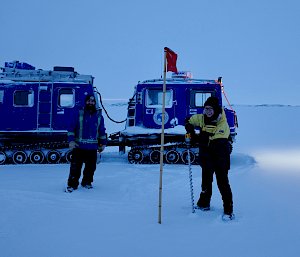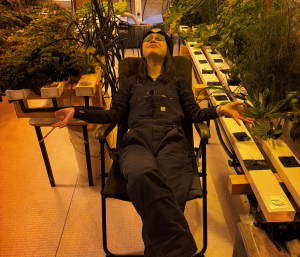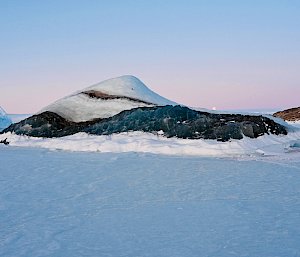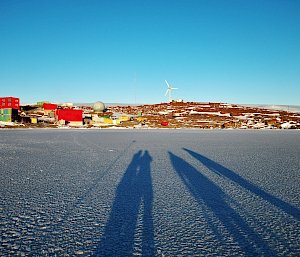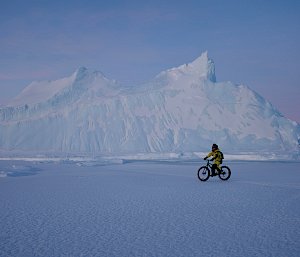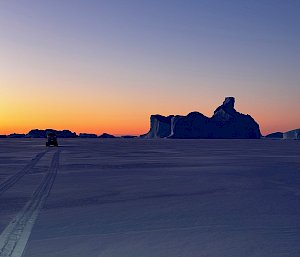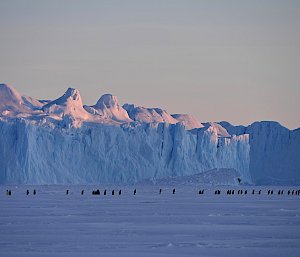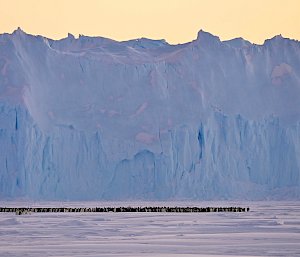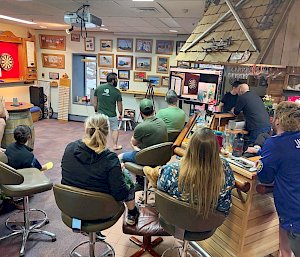Wintering survival strategies - by Dr Lin
We had been experiencing a rapid shortening of daylight for weeks, and on the ominous Friday the 13th of June, the sun did not rise above the horizon. The sky was painted a spooky shade of red, marking the beginning of two weeks of polar night.
One question I get asked often by friends and family is how the 21 of us cope in the dark Antarctic winter. As we emerge from the depths of winter at Mawson, I’ve taken some time to reflect on our experience as a team. Here are a few things that have helped us navigate the unforgiving conditions.
Maintaining A Routine
The expeditioners continued to show up for work even when the sun didn’t show up. The team kept the buildings heated, the power on and the water flowing so life on station could go on as usual.
The coffee machine gets a thorough workout every morning. As we sip the morning brew, half of the mess is brightly lit for those who embrace the invigorating effect of artificial light. While the other half of the room remains dark for those who prefer the mythical dark side of the Antarctic winter. Respecting everyone’s morning lighting preferences is a key part of the SOP.
Appreciating Our Icy Surroundings
The life cycle of sea ice is fascinating, and it has been a real privilege to witness it. Patches of pancake ice started to form on the surface in March. These patches would slowly bond together and grow in depth over the next few weeks. This process was monitored with anticipation as the thickness of the sea ice dictates when we would be able to walk and ride on it. Eventually, when the ice reached 60 cm thick, we were able to safely drive the Hagglunds across it.
During summer, we watched newly calved icebergs slowly separate from the ice shelf, spinning and drifting past the station before making their way north towards the horizon. As the fast ice formed along the coast, these drifting bergs froze into the winter landscape.
Then came the midwinter swim, when we carved out a pool in the meter-thick sea ice, allowing us a glimpse of the ocean in its liquid form again.
Admiring The Night Sky
The polar night revealed the most vivid aurora in the sky, often with the Milky Way shining brightly above. Photography enthusiasts study the aurora forecast, moon phases and cloud coverage to predict the ideal condition to capture the dazzling light show. For those of us less inclined to brave the outdoors with full camera gear, even the quick snaps with a smartphone from the bedroom window could turn out surprisingly impressive.
The aurora isn’t the only wonder of the dark sky, however. The moonrise above the iceberg-dotted horizon is also a sight to behold. There was a period of two weeks around the winter solstice when the moon circled the sky around the horizon without ever falling.
Staying Curious And Exploring Our Backyard
One thing I’ve learned is to never waste a good weather window. Those calm days between blizzards are excellent opportunities for field trips around the station.
Here at Mawson, we have access to a couple of colonies of emperor penguins that return to the same location every year to start their breeding cycle.
The Auster rookery is located 50 km east of the station, sheltered by giant icebergs. Groups of expeditioners make trips there to monitor the colony’s activity from a distance. These inquisitive creatures, especially the non-breeding juveniles, would often march in a synchronised waddle to greet the visitors.
Garden Therapy
We grow fresh vegetables and herbs in the hydroponic shed. As the last few apples lose their crispiness, the hydro team become ever more invested in this little freshness powerhouse.
The team works in shifts to keep the water pH and nutrient levels within strict limits, and experiments with different temperature and humidity levels to maximise production. This connection to our food has been rewarding. The calming effect of watching the plants grow has also been a welcome byproduct.
Learning New Skills
The long hours spent indoors offer a unique opportunity to reinvent ourselves. From carpentry to welding, the tradies are always willing to share their expertise with me, the resident apprentice. Many of us used newly acquired skills to create midwinter gifts that were exchanged on Midwinter’s Day. These handcrafted masterpieces will be treasured and serve as reminders of our time together as the 78th ANARE crew.
The pursuit of skills doesn’t end with gift making. Some of us are learning to play musical instruments in search of new creative outlets.
Supporting The Mawson Darts Team
Nothing boosts the team camaraderie like some fierce competition against our fellow stations. The Inter-station Darts Tournament between Mawson, Davis, Casey, and Macquarie Island is the biggest sporting event on the calendar. These games are made possible through modern connectivity, with devices live streaming the game and the cheering crowd. After defeating Davis and Macquarie Island, Team Mawson is ramping up practice for the final round against Casey. This is an all-station effort that involves coaching sessions, meal planning, and email banter taunting our opponents.
As the sun rises again and we gain a few extra minutes of daylight every day, it feels like a new beginning. I am proud of how we’ve thrived through the darkness, and I can’t imagine a better crew to winter with.
Dr Lin, Mawson

